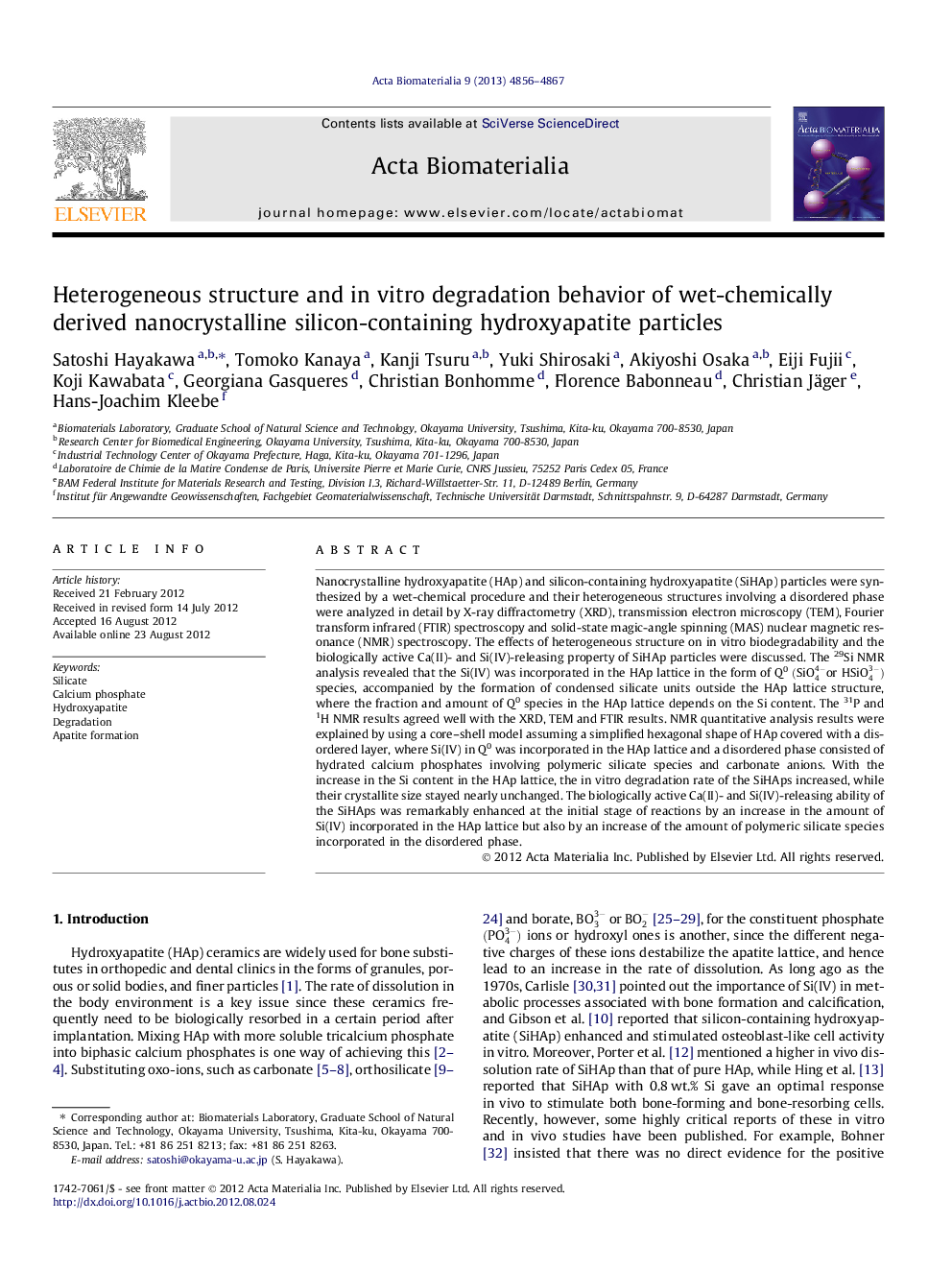| کد مقاله | کد نشریه | سال انتشار | مقاله انگلیسی | نسخه تمام متن |
|---|---|---|---|---|
| 941 | 69 | 2013 | 12 صفحه PDF | دانلود رایگان |

Nanocrystalline hydroxyapatite (HAp) and silicon-containing hydroxyapatite (SiHAp) particles were synthesized by a wet-chemical procedure and their heterogeneous structures involving a disordered phase were analyzed in detail by X-ray diffractometry (XRD), transmission electron microscopy (TEM), Fourier transform infrared (FTIR) spectroscopy and solid-state magic-angle spinning (MAS) nuclear magnetic resonance (NMR) spectroscopy. The effects of heterogeneous structure on in vitro biodegradability and the biologically active Ca(II)- and Si(IV)-releasing property of SiHAp particles were discussed. The 29Si NMR analysis revealed that the Si(IV) was incorporated in the HAp lattice in the form of Q0(SiO44-orHSiO43-) species, accompanied by the formation of condensed silicate units outside the HAp lattice structure, where the fraction and amount of Q0 species in the HAp lattice depends on the Si content. The 31P and 1H NMR results agreed well with the XRD, TEM and FTIR results. NMR quantitative analysis results were explained by using a core–shell model assuming a simplified hexagonal shape of HAp covered with a disordered layer, where Si(IV) in Q0 was incorporated in the HAp lattice and a disordered phase consisted of hydrated calcium phosphates involving polymeric silicate species and carbonate anions. With the increase in the Si content in the HAp lattice, the in vitro degradation rate of the SiHAps increased, while their crystallite size stayed nearly unchanged. The biologically active Ca(II)- and Si(IV)-releasing ability of the SiHAps was remarkably enhanced at the initial stage of reactions by an increase in the amount of Si(IV) incorporated in the HAp lattice but also by an increase of the amount of polymeric silicate species incorporated in the disordered phase.
Journal: Acta Biomaterialia - Volume 9, Issue 1, January 2013, Pages 4856–4867